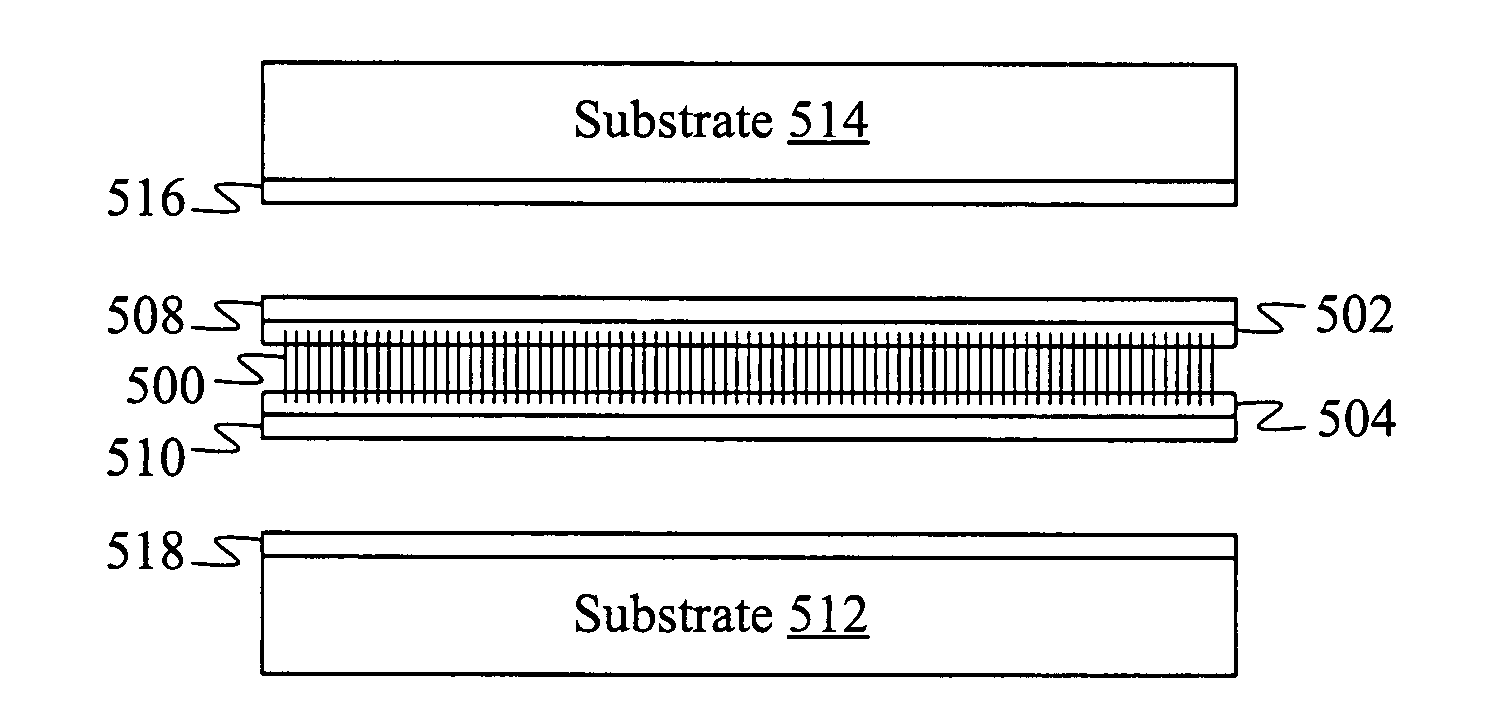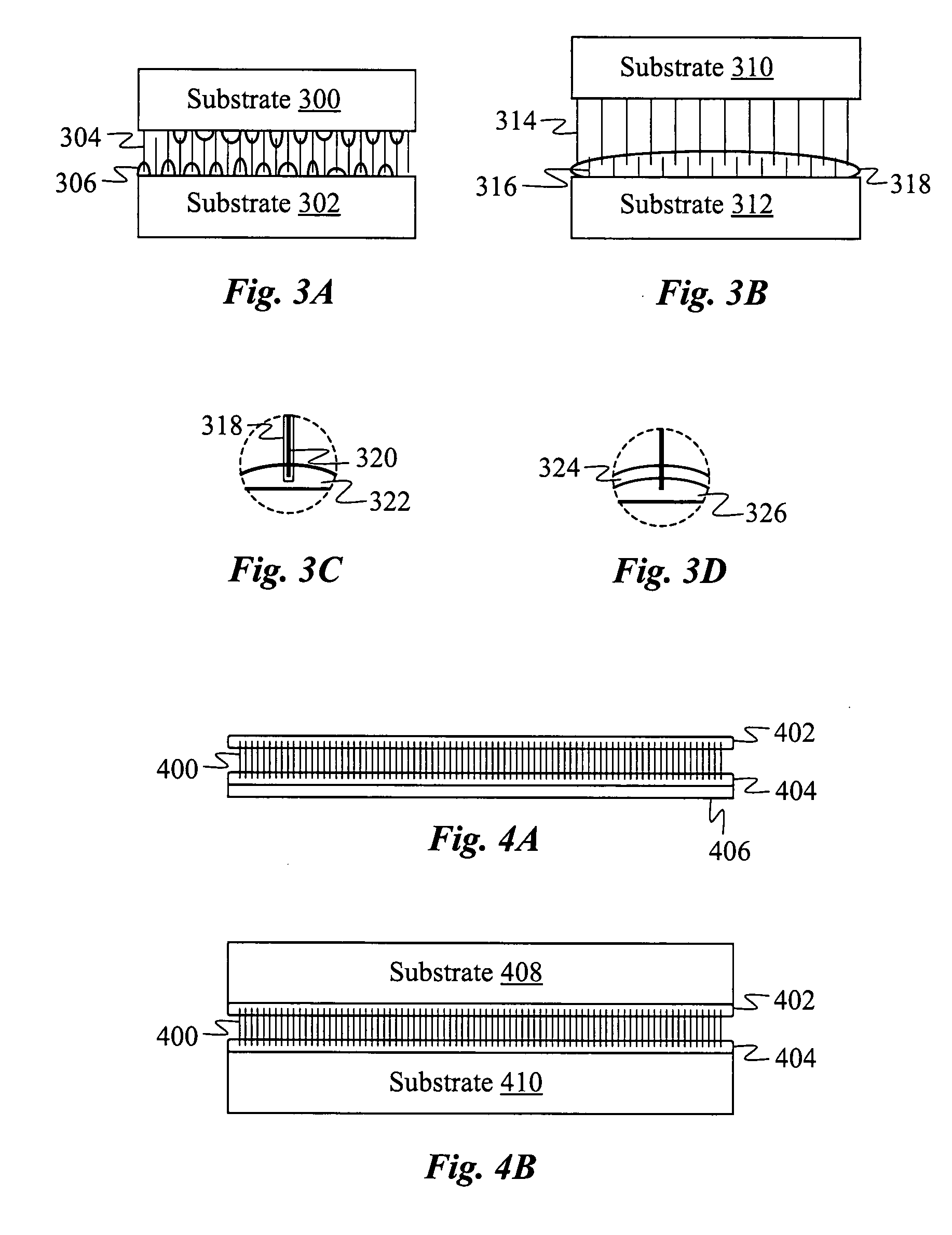Composite thermal interface material including aligned nanofiber with low melting temperature binder
a technology of thermal interface materials and carbon nanotube films, which is applied in the field of thermal interface materials, can solve the problem that the materials in such a composite binder necessarily melt, and achieve the effect of enhancing thermal conductivity
- Summary
- Abstract
- Description
- Claims
- Application Information
AI Technical Summary
Benefits of technology
Problems solved by technology
Method used
Image
Examples
Embodiment Construction
[0020]FIGS. 1A and 1B illustrate the formation of a composite thermal interface material from two substrates 100 and 102, a nanofiber film 104, and a binder 106, according to one embodiment of the invention. In typical applications, one of the substrates is a heat sink. As shown in FIG. 1A, substrate 100 initially has a bare exposed surface 108, while substrate 102 has the film of vertically aligned nanofibers 104 synthesized on its surface 110. Various well-known processes to synthesize nanofibers on substrates exist including deposition through arc discharge, laser ablation, and chemical vapor deposition (CVD). Typically in these processes, a catalysis layer less than a few nanometers thick is first deposited on the substrate (e.g., Si) to control and facilitate the nanofiber growth. The catalyst material is usually a metal oxide or metal such as iron, nickel, or cobalt. Annealing the catalyst layer at temperatures upwards of 800 C produces a monolayer of beads which become locali...
PUM
| Property | Measurement | Unit |
|---|---|---|
| Temperature | aaaaa | aaaaa |
| Thickness | aaaaa | aaaaa |
| Adhesion strength | aaaaa | aaaaa |
Abstract
Description
Claims
Application Information
 Login to View More
Login to View More - R&D
- Intellectual Property
- Life Sciences
- Materials
- Tech Scout
- Unparalleled Data Quality
- Higher Quality Content
- 60% Fewer Hallucinations
Browse by: Latest US Patents, China's latest patents, Technical Efficacy Thesaurus, Application Domain, Technology Topic, Popular Technical Reports.
© 2025 PatSnap. All rights reserved.Legal|Privacy policy|Modern Slavery Act Transparency Statement|Sitemap|About US| Contact US: help@patsnap.com



